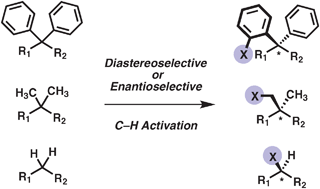Transition metal-catalyzed C–H activation reactions: diastereoselectivity and enantioselectivity†
Abstract
This critical review discusses historical and contemporary research in the field of transition metal-catalyzed carbon–hydrogen (C–H) bond

- This article is part of the themed collection: Rapid complexity generation in natural product total synthesis

 Please wait while we load your content...
Please wait while we load your content...